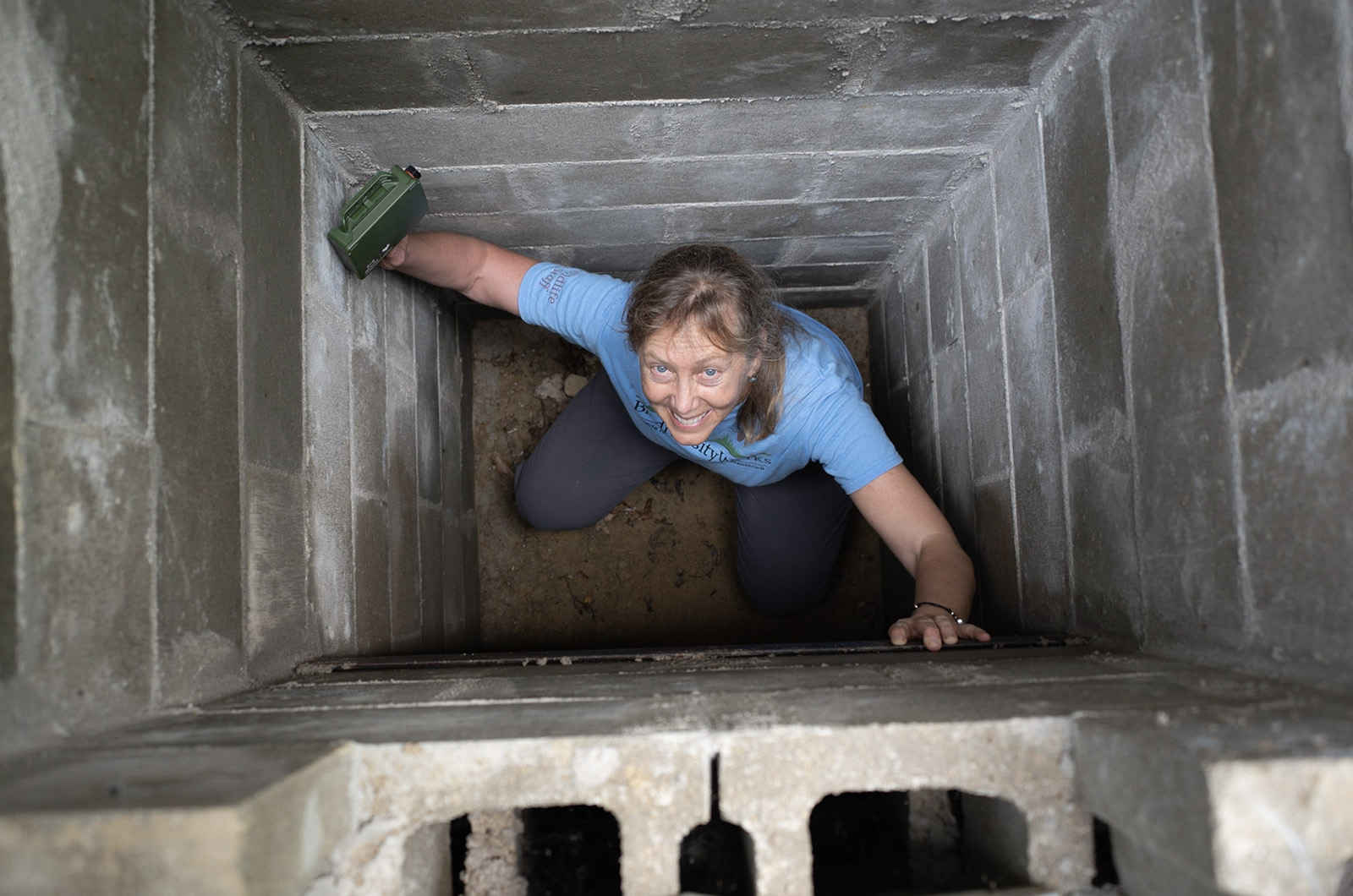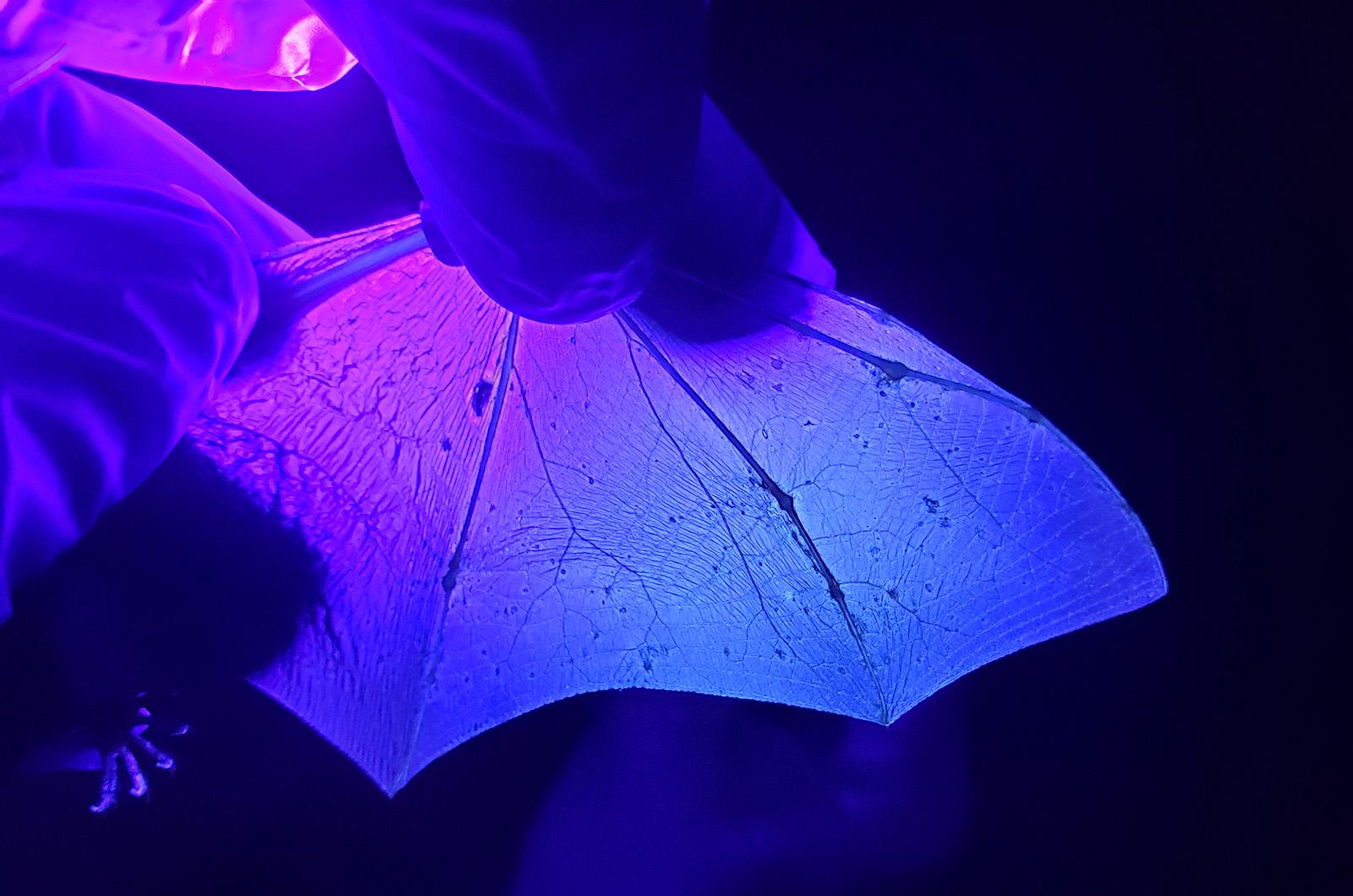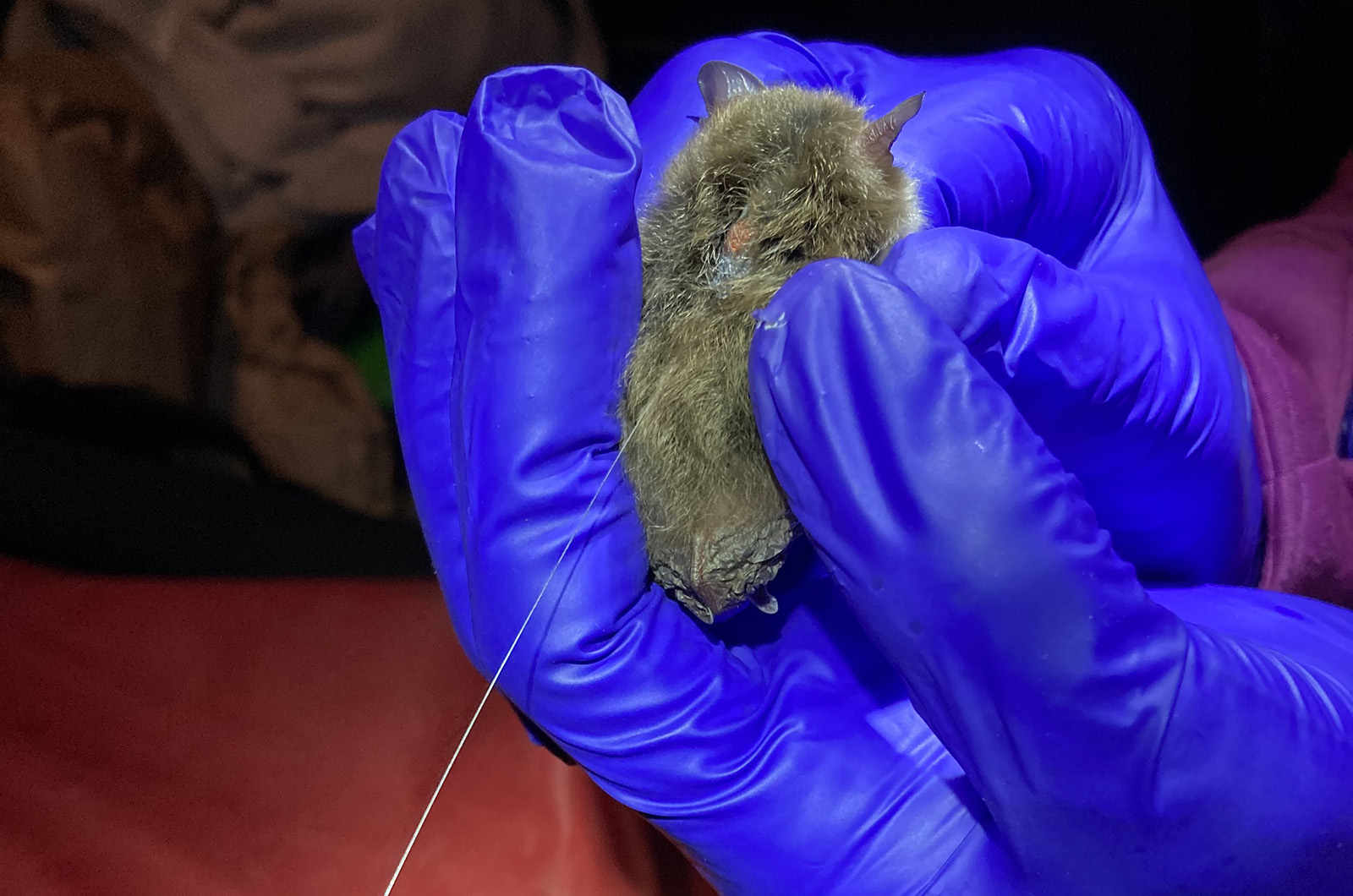For almost two decades, a disease known as white-nose syndrome (WNS) has been decimating millions of North American bats and mystifying scientists. When the disease was first detected on a Vineyard northern long-eared bat in 2017, wildlife biologists held their breath, fearing that the Island’s bat population would be wiped out.
But now, against all expectations, some of the Island’s northern long-eared bats are surviving WNS, providing hope for the species and sparking optimism in local conservationists.
“The fact that these bats are persisting here is amazing,” said Luanne Johnson, wildlife biologist and director of BiodiversityWorks in Vineyard Haven. “Any bats that are persisting on the Island are the ones that are going to be recovering the population.”
Ms. Johnson and Liz Olson, assistant director of BiodiversityWorks, have been studying northern long-eared bats since 2013. They capture the bats using mist nets hung in forests and then release them with transmitters attached to their backs. The transmitters emit radio signals that let the researchers track bat behavior, hibernation tactics and distribution around the Island.
Ms. Johnson is not certain why some bats are surviving the disease but suspects that the Vineyard’s increasingly mild climate and available hibernation spaces play a part in their resilience.
She said that WNS is caused by an invasive fungus called pseudogymnoascus destructans, also known as Pd, which thrives in cold, dark and damp areas such as caves and mines. When northern long-eared bats move into these sites for winter hibernation, Pd infects their skin and awakens them from their dormant state. The bats use up their energy reserves, and often fly from their hibernation spaces into the chilly winter air where they die from exhaustion or exposure.
“They rapidly lose all of their fat stores and die a horrible death with deteriorated wings,” Ms. Johnson said.
Since there are no caves or mines on the Vineyard, northern long-eared bats gravitate to house crawl spaces and unfinished basements for hibernation. If a bat is already infected with Pd, the fungus will grow in these spaces, too, added Ms. Johnson.
However, in recent years the Island’s winters have been warmer than usual, and crawl spaces and basements dry out quicker in mild temperatures than caves or mines. Because of this, Ms. Johnson theorizes that some Island bats are experiencing a shorter Pd infection period making it possible to effectively battle WNS.
“The ones that are going into caves or mines elsewhere in the state are all dying because they’re having a longer exposure period to the fungus,” she said. “Some of the bats [on the Island] that are spending winters deep in an unfinished basement or crawl space are still here.”
Still, a female northern long-eared bat has only one pup per year, she added, and recovering the Island’s population will take a long time.
“It’s been a crisis and is still very much a crisis,” she said. “They are still in jeopardy. Yes, they are persisting, but persisting only in small numbers.”
Some groups of northern long-eared bats are surviving WNS on Nantucket and Long Island, too. To better understand the phenomenon, Ms. Johnson and Ms. Olson have been collaborating with researchers at the State University of New York at Albany and the Nantucket Conservation Foundation (NCS).
At all three locations, researchers found the destruction of hibernation spaces to be one of the greatest threats to the bats’ survival of WNS. As homeowners renovate or tear down old buildings, the bats use crawl spaces and basements as winter refuge.
“We’re seeing more and more of these older Cape-style homes being purchased and torn down,” said Danielle O’Dell, a wildlife research ecologist at NCS. “These huge mansions and new houses don’t have crawl spaces anymore and we’re very worried.”

Nantucket’s case load of WNS is much lower than the Vineyard’s and Long Island’s, which is likely because of the island’s greater distance from the mainland, said Ms. O’Dell. But that hasn’t stopped her and other NCS scientists from taking action.
“We were all worried about these types of buildings disappearing but then we thought, what if we just build our own?” she said.
Last year, Ms. O’Dell and her team transformed an abandoned cinder block foundation into a hibernaculum — a place for northern long-eared bats to take shelter in the winter.
“We put in a wall and a roof and insulated the whole thing,” she said. “Then we put in little access points so bats can squeeze in.”
The team plans to test run the hibernaculum early this fall by luring bats with an acoustic board that emits various bat calls. Scientists at BiodiversityWorks will also test out a homemade hibernaculum this year, which they created by digging a large hole in the ground and lining it with cement. Bats can enter the space through small slits in the shelter’s hatch.
Ms. Johnson is hopeful that the hibernacula will be effective and that the warmer winter months will remain in the bats’ favor, but said that the best thing Islanders can do to protect the species is to preserve prime hibernation spaces and contact BiodiversityWorks if they find bats in their home.
“[Northern long-eared bats] are insectivores, so they’re really an important top-down predator that controls insect populations on the Island,” she said. “They have incredible recuperative powers and there’s a lot that we can learn from bats about their immune system. They’re important.”
To report a bat sighting in a basement or crawl space to BiodiversityWorks, call 800-690-0993 or email info@biodiversityworksmv.org.







Comments
Comment policy »